![]()
![]()
![]()
Use LEFT and RIGHT arrow keys to navigate between flashcards;
Use UP and DOWN arrow keys to flip the card;
H to show hint;
A reads text to speech;
54 Cards in this Set
- Front
- Back
|
Romanticism
|
- Triumph of individuality and imagination - Subject matter: contemporary events, landscape - Artists: British: Turner, and Constable. German: Friedrich. French: Gericault and Delacroix. Spanish: Goya (influenced by Manet & realism) Events: American revolution, French revolution, Napoleon crowned king |
|
|
Romanticism pt 2 |
- A philosophical, literary, musical, and artistic movement - Reaction against Neoclassicism - Emphasis on imagination and emotion - Strong interest in personal ability and artist's autobiography - Appreciation of the common man, nature, and the melancholy - "The sublime": quality of greatness, whether physical, moral, intellectual, metaphysical, aesthetic, and spiritual or artistic - Term refers to greatness beyond comprehension |
|

|
Constable, The Haywain |
|
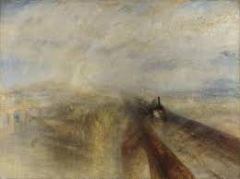
|
Turner, Rain, Steam, Speed: The Great Western Railway
|
|
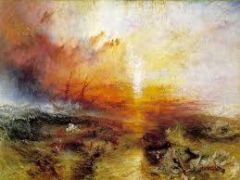
|
Turner, The Slave Ship |
|

|
Goya, The Third of May
|
|
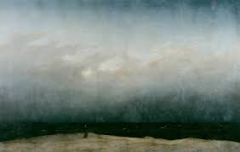
|
Friedrich, Monk By the Sea - The SUBLIME - Intimidating and vast nature in contrast with a small and weak human |
|

|
Gericault, Raft of the Medusa |
|
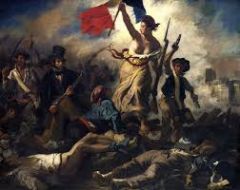
|
Delacroix , Liberty Leading the People
|
|
|
Realism
|
- Celebrates working class and peasants - Subject matter: Historical events, daily life of lower classes, political commentary - en plein air rustic painting - Revolutionary in its rejection of the academy - Artists: Corot Courbet Manet Millet Daumier - Historical events: European democratic revolutions of 1848, Communist Manifesto, civil war in US |
|
|
Realism pt 2 |
- Rejection of the Academy - Artists should be self taught - Interest in the now - Focus on the real - Art should deal with the human experience - Tech: Almost photographic; interest in portraying the dignity of ordinary people |
|
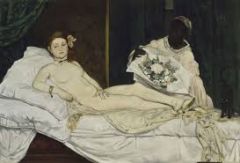
|
Manet, Olympia
- a prostitute who doesn't want flowers |
|

|
Manet, Luncheon on the Grass |
|
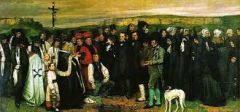
|
Courbet, Burial at the Ornans
|
|
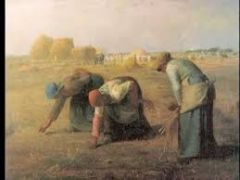
|
Millet, The Gleaners
- Poor people being poor - Left over scraps in a field |
|

|
Daumier, Rue Transnonain
|
|
|
Impressionism
|
- Capturing fleeting effects of natural light. Interest in light , color, and atmosphere - Subject matter: daily life of the bourgeoisie - Artists: Monet Renoir Pissarro Cassatt Morisot Degas Historical Events: Art after the invention of photography, Franco-Prussian War, Unification of Germany |
|
|
Impressionism pt 2 |
- Concern themselves with visual issues. They paint what the eye can see rather than what the mind know - The effects of light on the subject is emphasized - Era: Development of photography - Remember: Small dabs of color that appear as separate strokes of paint when seen close up. Yet at a distance, one sees uniform subjects - Thick paint, visible brushstrokes, loose rendering -immediacy of sensation- capturing a moment, snapshot. - Impressionist paintings were rejected at the salon, the put on their own exhibitions |
|
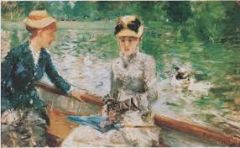
|
Morisot, Summer's Day
|
|

|
Morisot, The Harbor at Lorient |
|
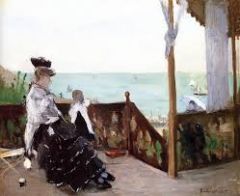
|
Morisot, Villa at the Seaside |
|
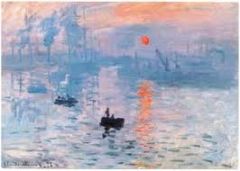
|
Monet, Impression Sunrise
|
|
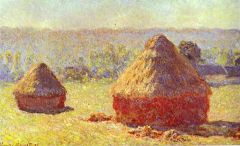
|
Monet, Haystacks, End of Summer, Morning, 1891 |
|
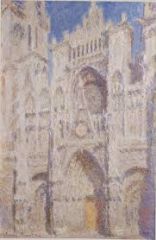
|
Monet, Rouen Cathedral: The Portal
|
|
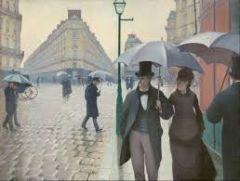
|
Caillebotte , Paris: A Rainy Day
|
|

|
Pissarro, The Stage Couch at Louveciennes
|
|

|
Pissarro, La Place du Theatre Francais |
|
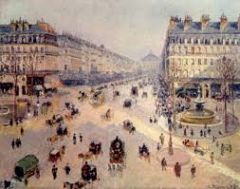
|
Pissarro, Avenue de L'Opera, Sun, Winter, Afternoon |
|
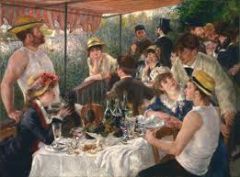
|
Renoir, Luncheon of the Boating Party
|
|
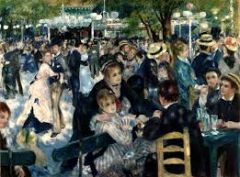
|
Renoir, Moulin de la Galette |
|
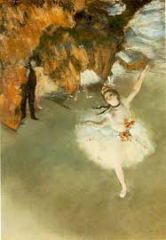
|
Degas , Dancer
|
|
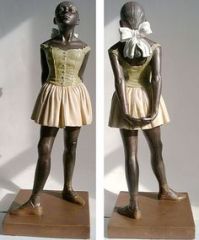
|
Degas, Bronze Sculptures of Dancers |
|

|
Degas, Ballet Rehearsal |
|
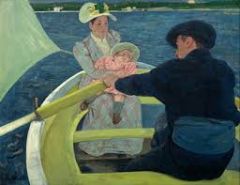
|
Cassat, The Boating Party
|
|
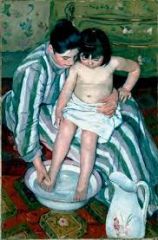
|
Cassatt, The Bath |
|
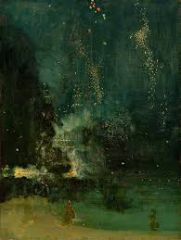
|
Whistler, Nocturne in Black and Gold
|
|
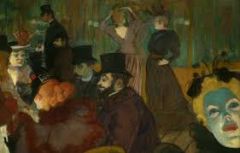
|
Lautrec , At the Moulin Rouge
|
|
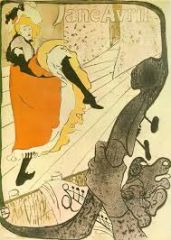
|
Lautrec, Jane Avril |
|
|
Postimpressionism
|
- A soft revolt against Impressionism - Blanket term applied to describe the very different styles of artists furing this period; what unifies them is their pushing of the boundaries of impressionism - An expressionistic turn (Romanticism) - Artists: Von Gogh Gauguin Cezanne Seurat Rousseau Munch Historical Events: Belle Epoque |
|
|
Postimpressionism pt 2 |
- Extended impressionism while rejecting its limitations - The continued using vivid colors, thick application of paint, distinctive brush stroke, and real life subject matter.... but they were more inclined to emphasize geometric forms, to distort form for expressive effect, and to use unnatural or arbitrary color |
|
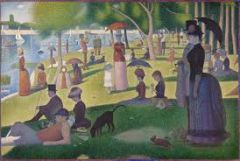
|
Seurat, Sunday Afternoon on the Island of La Grande Jatte
- Pointillism: lots o' dots - Bourgeois leisure |
|

|
Van Gogh, Starry Night
- Swirling night sky overwhlms the little town - Cypress tree was used in France and Italy to mark graves (symbol of death) - Through death we reach the stars - Expressive color, emotional turmoil |
|
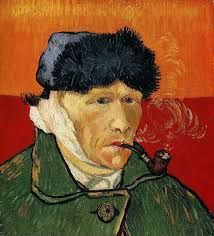
|
Van Gogh, Self Portrait |
|
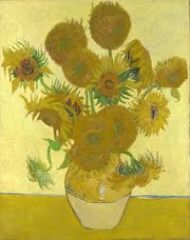
|
Van Gogh, Sunflowers |
|
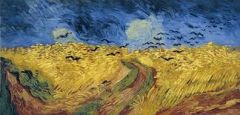
|
Van Gogh, Whitfield with Crows |
|

|
Gauguin, Day of the Gods
- Primitivism: borrows visual forms from non western or prehistoric people. - Tahiti |
|
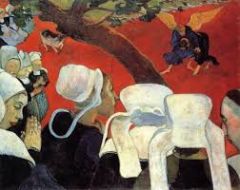
|
Gauguin, Vision after the Sermon
|
|

|
Munch, The Scream
- Expressive - Dark influences - Psychological themes - Scream from nature or whatever |
|
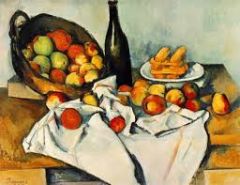
|
Cézanne, Basket of Apples
- "Father of Cubism" influence Picasso and Braque, interest in line and form - Heavy outlines |
|
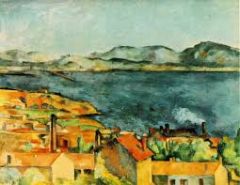
|
Cézanne, The Bay - Bright colors - Heavy outlines - Flatness |
|

|
Cézanne, Maison Maria with the View of Chateau Noir
|
|
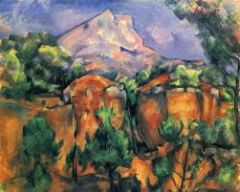
|
Cézanne, Mont Saint-Victorire
|
|
|
Choose any three works of art from the entire course that you think are the most important toWestern art history. At least one must be from the 19th century.
|
think about this |
|

|
Friedrich, Wanderer above the Sea of Fog
romantic |

